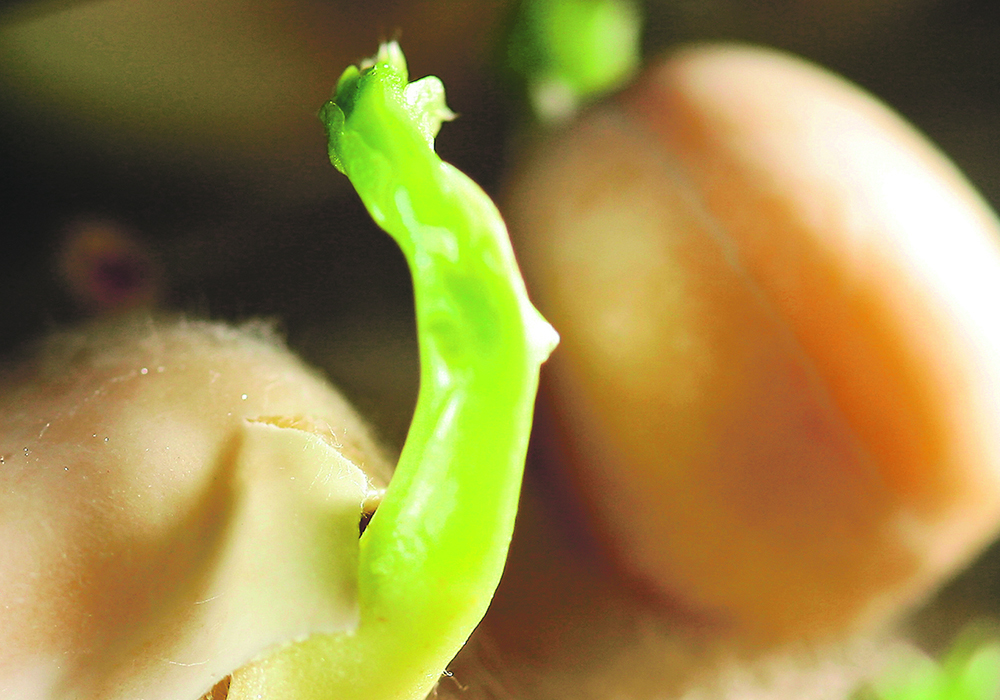British researchers study how seeds germinate at different times to hedge their bets and increase chances for survival
What triggers seeds to germinate? Even though they may be genetically identical, why does each seed choose its own time to sprout?
It comes down to randomness and the way this genetic behaviour causes cells to become different from each other.
Spring brings stronger light, warmer temperatures and water, all of which trigger a seed into sprouting. But a late frost or a sudden harsh weather event could throw the process sideways.
Plants apparently plan for this and hedge their bets against environmental risk by not having all their seeds germinate at once. Some sprout at different times in the growing season and some lie dormant for another year.
Read Also

Manitoba community projects get support from HyLife
HyLife Fun Days 2025 donated $35,000 each to recreation and housing projects in Killarney, Steinach and Neepawa earlier this fall.
The degree of variability in sprouting can be a problem when farmers expect to harvest the entire crop at one time.
At the Sainsbury Laboratory in the University of Cambridge, scientists studied the complexities of germination in thale cress (Arabidopsis thaliana) and identified two regions of DNA that control germination variability.
“We actually became interested in germination time because of its lack of precision,” said Katie Abley, researcher and project manager.
“The Locke lab that I’m working in is trying to understand the role of stochasticity (randomness) in bacteria and plants. In bacteria, stochasticity in gene expression can cause genetically identical bacterial cells to become different from each other.
“For example, bacterial cells can randomly switch on genes that make them resistant to stresses like antibiotics, even when the antibiotic is not present.”
Abley said that, in a population of bacteria, a small percentage express an antibiotic resistance gene so that when an antibiotic is applied, that gene can keep the population of bacteria alive.
This random switching on of stress response genes is more efficient than having them on all the time.
“We were interested in seed germination time because we thought (and others have proposed) that similar principles (to that of bacteria) might apply,” said Abley.
“It was already known that genetically identical seeds do not all germinate at the same time. In desert annual species, research has shown that the more unpredictable the environment, the more spread out the germination times are, which supports the bet-hedging hypothesis. We wanted to understand what controls the level of variability in germination times.”
Two plant hormones interact in the control of germination. Abscisic acid (ABA), which inhibits germination and gibberellic acid (GA), which promotes germination control the moment of germination, but Abley’s team wanted to know how the interaction creates the variability.
“The ABA and GA hormones both inhibit each other by regulating the production and degradation rates of each other,” she said.
“For example, through their effects on the expression of a set of intermediate genes, ABA decreases the level of enzymes that produce GA, and vice versa, GA decreases the level of enzymes that produce ABA.
“This creates a switch that controls germination based on the balance of ABA and GA. If the levels of one hormone rise, it inhibits the production of the other one.
“For example, as the levels of GA rise, the levels of ABA reduce so GA production is less inhibited by ABA, allowing GA levels to increase even more. The system can flip such that the hormone that initially had a slight upper hand comes to completely dominate.”
Abley said the time-dependent toggle switch means the switch between the two states is influenced by a time-dependent variable that allows for a rise in the GA production rate that occurs upon planting.
She added that, as seeds form on the mother plant, they have high levels of ABA that inhibit germination. When the seeds are sown, environmental stimuli can cause increases in GA production enough to flip the switch so germination occurs.
Researchers measured the levels of variability in germination times for hundreds of genetically distinct strains of Arabidopsis and identified two regions of DNA that control variability. They generated a mathematical model of the ABA-GA network to understand how the interactions between the two cause a batch of identical seeds to germinate at different times.
“Based on our experiments and modelling, we think that stochasticity, or randomness, has more effect on the germination times when seeds are more sensitive to ABA,” Abley said.
“In the model that we developed, the switching between the non-germination state and the germination state is influenced by the rise in GA production and by small random fluctuations in the levels of ABA and GA in each seed. When seeds are not very sensitive to ABA, the rise in GA production upon sowing easily flips the switch so that GA dominates, and the seeds can quickly germinate.”















